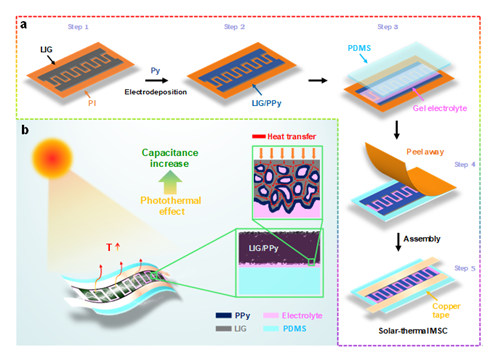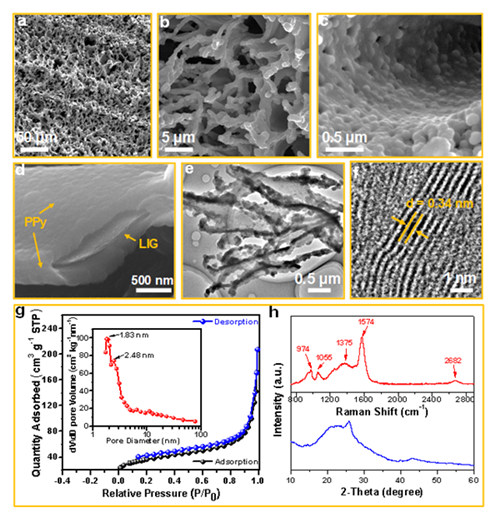Due to the fast charging speed and high conversion energy efficiency, super capacitors can be recycled hundreds of thousands of times and have long working hours, now they have been applied to new energy buses. New energy vehicles that use supercapacitors as charging energy can start charging when passengers get on and off the bus. One minute of charging can allow new energy vehicles to travel for 10-15 kilometers. Such supercapacitors are much better than batteries. The charging speed of batteries is much slower than that of super capacitors. It takes only half an hour to charge to 70%-80% of the power. However, in low temperature environments, the performance of supercapacitors is greatly reduced. This is because the diffusion of electrolyte ions is hindered at low temperatures, and the electrochemical performance of power storage devices such as supercapacitors will be rapidly attenuated, resulting in a greatly reduced working efficiency of supercapacitors in low temperature environments. So is there any way to make the supercapacitor maintain the same working efficiency in a low temperature environment? Yes, photothermal-enhanced supercapacitors, supercapacitors researched by the team of Wang Zhenyang Research Institute, Institute of Solid State Research, Hefei Research Institute, Chinese Academy of Sciences. In the low temperature environment, the electrochemical performance of supercapacitors is greatly attenuated, and the use of electrode materials with photothermal properties can achieve rapid temperature rise of the device through the solar photothermal effect, which is expected to improve the low temperature performance of supercapacitors.  The researchers used laser technology to prepare a graphene crystal film with a three-dimensional porous structure, and integrated polypyrrole and graphene through pulsed electrodeposition technology to form a graphene/polypyrrole composite electrode. Such an electrode has a high specific capacity and uses solar energy. The photothermal effect realizes the rapid rise of electrode temperature and other characteristics. On this basis, the researchers further constructed a new type of photothermally enhanced supercapacitor, which can not only expose the electrode material to sunlight, but also effectively protect the solid electrolyte. In a low temperature environment of -30 °C, the electrochemical performance of supercapacitors with severe decay can be rapidly improved to room temperature level under sunlight irradiation. In a room temperature (15°C) environment, the surface temperature of the supercapacitor increases by 45°C under sunlight. After the temperature rises, the electrode pore structure and the electrolyte diffusion rate greatly increase, which greatly improves the capacitor’s electricity storage capacity. In addition, since the solid electrolyte is well protected, the capacitance retention rate of the capacitor is still as high as 85.8% after 10,000 charges and discharges.
The researchers used laser technology to prepare a graphene crystal film with a three-dimensional porous structure, and integrated polypyrrole and graphene through pulsed electrodeposition technology to form a graphene/polypyrrole composite electrode. Such an electrode has a high specific capacity and uses solar energy. The photothermal effect realizes the rapid rise of electrode temperature and other characteristics. On this basis, the researchers further constructed a new type of photothermally enhanced supercapacitor, which can not only expose the electrode material to sunlight, but also effectively protect the solid electrolyte. In a low temperature environment of -30 °C, the electrochemical performance of supercapacitors with severe decay can be rapidly improved to room temperature level under sunlight irradiation. In a room temperature (15°C) environment, the surface temperature of the supercapacitor increases by 45°C under sunlight. After the temperature rises, the electrode pore structure and the electrolyte diffusion rate greatly increase, which greatly improves the capacitor’s electricity storage capacity. In addition, since the solid electrolyte is well protected, the capacitance retention rate of the capacitor is still as high as 85.8% after 10,000 charges and discharges.  The research results of Wang Zhenyang’s research team at the Hefei Research Institute of the Chinese Academy of Sciences have attracted attention and have been supported by important domestic R&D projects and the Natural Science Foundation. Hopefully we can see and use photothermally enhanced supercapacitors in the near future.
The research results of Wang Zhenyang’s research team at the Hefei Research Institute of the Chinese Academy of Sciences have attracted attention and have been supported by important domestic R&D projects and the Natural Science Foundation. Hopefully we can see and use photothermally enhanced supercapacitors in the near future.
Post time: Jun-15-2022
